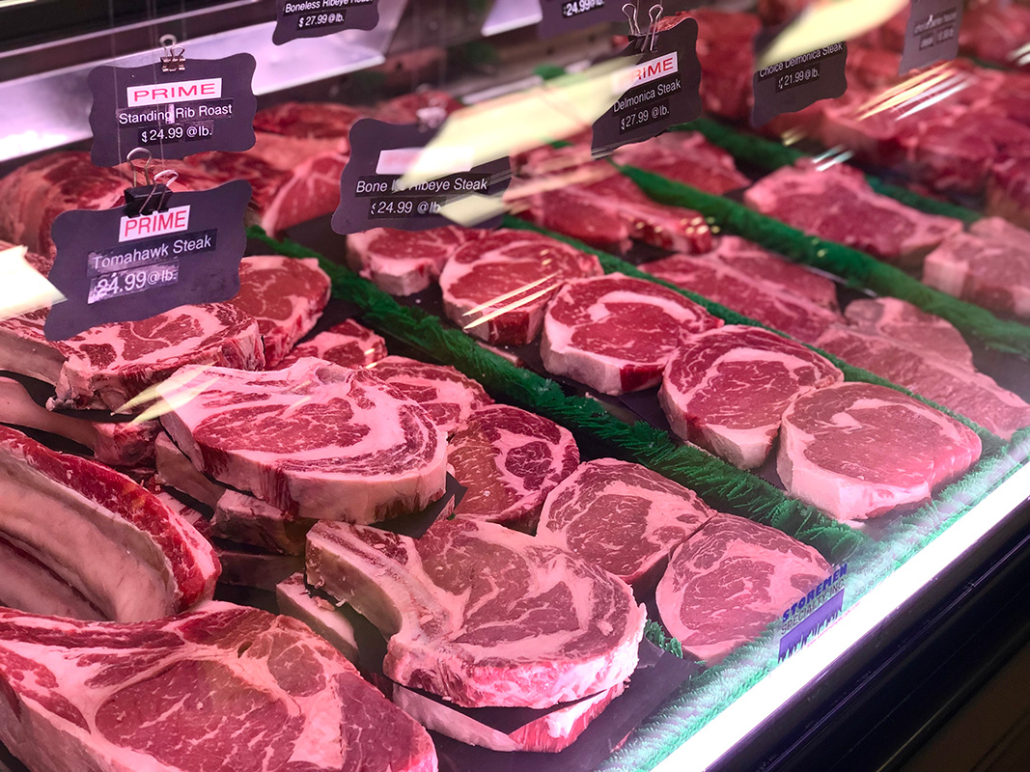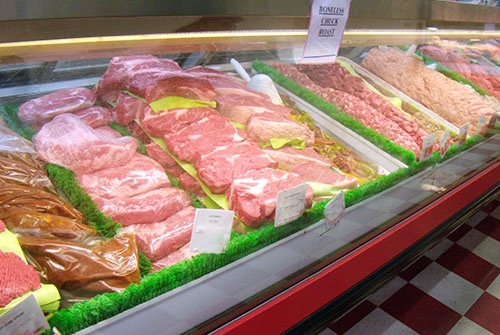Why Bagley Farms Meat Market Edwardsville IL Is the most effective Selection for Quality Meats
Why Bagley Farms Meat Market Edwardsville IL Is the most effective Selection for Quality Meats
Blog Article
Uncover the Art of the Butcher's Cut in a Modern Meat Market
In the ever-evolving landscape of modern meat markets, the butcher's cut has actually transcended its typical roots, combining old-time craftsmanship with modern practices. bagley farms meat market edwardsville il. Today's butchers are not merely cpus of meat; they are educated craftsmens that highlight sustainability and ethical sourcing. Their know-how in picking and preparing cuts tailored to specific culinary demands supplies an unrivaled eating experience. What absolutely sets the modern butcher apart is their capacity to create a deeper link in between consumers and the beginnings of their meat. Exactly how do these masters equilibrium custom with development, and what effects does this have for the future of meat intake?
Advancement of Butchery Methods

The mid-20th century saw butchery techniques further fine-tuned by scientific understandings into muscle mass biology and meat aging, boosting both tenderness and preference. Advancements like vacuum packaging and refrigeration expanded product shelf-life, permitting butchers to branch out offerings and improve top quality control. This period likewise marked the increase of specialized equipment, such as band saws and meat slicers, which increased accuracy and efficiency in meat handling.
The 21st century has actually introduced electronic technology right into the butchery world. Digital systems now help in tracking pet provenance and optimizing cuts to fulfill specific customer choices. In addition, a rebirth in artisanal butchery has actually arised, mixing conventional skills with modern-day understanding to accommodate customers looking for moral and lasting meat alternatives. This advancement highlights a vibrant interaction in between custom and advancement, meeting contemporary needs while maintaining the craft's heritage.

Understanding Meat Cuts

Recognizing the intricacies of meat cuts is important for both butchers and consumers seeking quality and worth. For butchers, accurate cuts show skill and regard for the craft, making sure minimal waste and optimal yield.
The primary classifications of meat cuts include primitive, sub-primal, and retail cuts. Primitive cuts, such as the loin, rib, and chuck, are the big sections at first separated from the carcass. Butchers after that damage these down even more right into sub-primal cuts, before ultimately generating retail cuts available to consumers, like ribeye or tenderloin. Each stage calls for mindful interest to physiological framework and muscular tissue structure.
Understanding muscular tissue make-up is important; muscle mass utilized a lot more frequently by the pet tend to be tougher and are best fit for slow-moving cooking techniques, while less-used muscles, like those found in the loin, are much more tender and suitable for cooking or roasting. Experience with these distinctions equips consumers to make informed selections, boosting their culinary endeavors.
Choosing High Quality Meat
Selecting the best meat includes greater than just picking an aesthetically enticing piece from the display. The art of picking quality meat calls for a critical eye and expertise of specific features that represent quality and excellence. Pay attention to the shade; beef needs to have a bright, cherry-red hue, while lamb should display a soft pink tone, and pork a light pink. This indicates the meat is fresh and hasn't been revealed to oxygen for also long.
Second of all, take into consideration the marbling, which refers to the white flecks of fat within the muscle. Appropriate marbling is a vital indication of inflammation and flavor, as it melts during cooking, enhancing Recommended Reading the meat's juiciness. Keep in mind, greater marbling typically associates with premium high quality cuts, such as USDA Prime.
Structure is an additional essential variable; meat must really feel solid to the touch, not slimed or extremely soft. In addition, be mindful of the scent. Fresh meat should have a tidy, neutral scent, totally free from any sour or repulsive smells.
Pairing Cuts With Cooking Methods
Effectively coupling cuts of meat with the proper food preparation approaches is necessary for accomplishing optimal flavor and appearance. Different imp source cuts differ in inflammation, marbling, and connective tissue web content, each calling for details strategies to open their capacity. For example, tender cuts like filet mignon and ribeye, with their integral marbling, gain from high-heat, quick-cooking approaches such as cooking or pan-searing. These approaches improve the meat's natural tastes and ensure a juicy finish.
Alternatively, harder cuts like brisket and chuck roast are rich in collagen, which damages down into jelly when cooked gradually. These cuts are optimal for braising or slow roasting, permitting the meat to tenderize in time and develop deep, complicated flavors. Likewise, cuts such as brief ribs and pork shoulder get on well with slow-cooking methods, where extended cooking times change their robust appearances into delicious recipes.
Lamb shanks and oxtail, which need extended cooking to tenderize, are excellent candidates for cooking or slow simmering. These approaches coax out rich, passionate tastes while preserving moisture. By recognizing the unique characteristics of each cut, cooks and home cooks alike can boost their culinary creations, making sure each recipe is both pleasing and memorable.
The Butcher's Duty Today
Browsing the evolving landscape of the modern meat market, the butcher's role today expands past mere preparation of cuts. Contemporary butchers are cooking artisans, teachers, and supporters for lasting techniques. They connect the space in between the farm and the fork by making certain moral sourcing, recognizing animal husbandry, and focusing on openness in the supply chain. This shift mirrors the expanding consumer need for top quality over amount, where provenance and animal welfare are critical.
Along with crafting exact cuts, butchers now engage straight with clients, using cooking suggestions and tailoring options to suit individual requirements and choices. Their proficiency in meat aging, marbling, and flavor accounts encourages consumers to make educated choices, boosting their cooking experiences. This customized service exhibits the butcher's advancing role as a trusted consultant in the kitchen area.
In addition, butchers are pivotal in reducing waste, using entire pets to develop varied items such as sausages and supplies - bagley farms meat market edwardsville il. This comprehensive method not only appreciates the animal however likewise lines up with modern sustainability objectives. This way, the modern-day butcher personifies both practice and innovation, adapting to an ever-changing market while preserving the artistry and integrity of their craft

Conclusion
Mastery in understanding diverse meat cuts and high quality indications empowers butchers to supply enlightened recommendations, lining up details cuts with optimum cooking techniques. By recognizing historic practices while accepting modern needs, the see this page butcher's duty remains important in today's innovative meat market.
Report this page